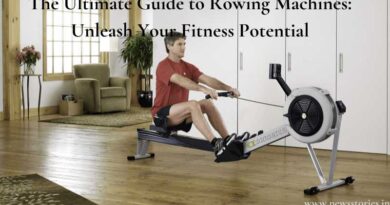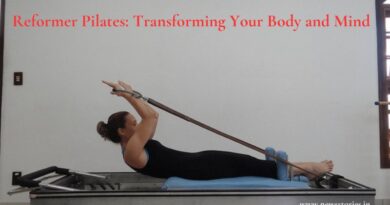Pull Up Bar: A Comprehensive Guide to Building Upper Body Strength
Introduction
Welcome to our comprehensive guide on pull-up bars. If you’re looking to build upper body strength and improve your fitness level. A pull-up bar is an excellent tool to have at home or in the gym. In this article, we will explore the various aspects of pull-up bars.
Including their benefits, types, installation, and common FAQs. Whether you’re a beginner or an experienced fitness enthusiast. This guide will provide you with the knowledge you need to make the most out of your pull-up bar workouts.
Benefits of Using a Pull Up Bar
Pull-up bars offer a wide range of benefits for individuals looking to strengthen their upper body. Here are some key advantages.
Increased Upper Body Strength: Pull-ups primarily target the muscles in your upper body. Including the back, shoulders, chest, and arms. Regular pull-up bar workouts can help you develop significant upper body strength.
Improved Grip Strength: Pulling yourself up on a bar requires a strong grip. By regularly performing pull-ups, you can significantly improve your grip strength. Which has practical applications in various sports and daily activities.
Versatile Workout Option: Pull-up bars provide a versatile workout option as they allow you to perform various exercises. Apart from traditional pull-ups, such as chin-ups, leg raises, and hanging knee tucks. This versatility adds variety to your workouts and targets different muscle groups.
Convenience: Having a pull-up bar at home or in your personal gym provides convenience and accessibility. You can incorporate pull-up exercises into your fitness routine. Without the need to visit a gym or rely on complex workout equipment.
Cost-Effective: Compared to other fitness equipment, pull-up bars are relatively affordable and offer great value for money. They require minimal maintenance and are built to last. Making them a cost-effective investment in your fitness journey.
Types of Pull Up Bars
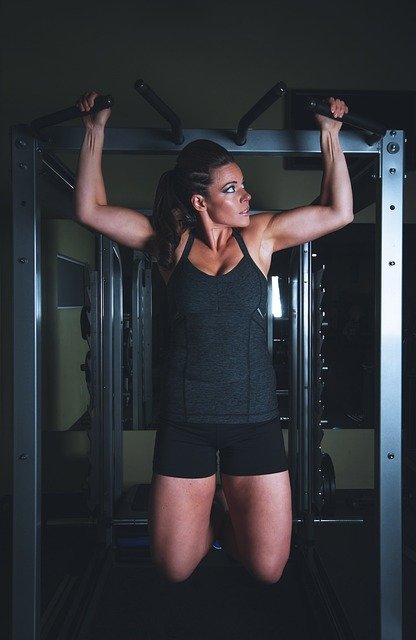
Pull-up bars come in various types, each with its own set of features and installation requirements. Let’s explore the most common types of pull-up bars available.
Doorway Pull Up Bars: Doorway pull-up bars are designed to fit securely in a standard doorway frame. They typically use leverage or pressure to stay in place. Eliminating the need for drilling or permanent installation.
Wall-Mounted Pull Up Bars: Wall-mounted pull-up bars are attached to a wall using brackets and screws. They provide a sturdy and permanent solution for pull-up exercises and can support higher weight capacities.
Ceiling-Mounted Pull Up Bars: Ceiling-mounted pull-up bars are attached to the ceiling. Providing ample space for pull-up movements. They are ideal for individuals who prefer more freedom of movement during their workouts.
Free-Standing Pull Up Bars: Free-standing pull-up bars are standalone structures that do not require any installation. They offer stability and often come with additional features such as dip bars and push-up handles.
How to Choose the Right Pull Up Bar

When selecting a pull-up bar, there are a few factors to consider to ensure you choose the right one for your needs.
Available Space: Assess the available space in your home or gym to determine. Whether you need a doorway, wall-mounted, ceiling-mounted, or free-standing pull-up bar.
Weight Capacity: Check the weight capacity of the pull-up bar to ensure it can support your body weight. And any additional weight you may use for weighted pull-ups.
Installation Method: Consider the installation method and choose one that suits your preferences. Doorway pull-up bars offer easy setup, while wall-mounted and ceiling-mounted options provide greater stability.
Adjustability: Some pull-up bars offer adjustable features, such as multiple grip positions or height adjustments. These can add variety to your workouts and accommodate different exercise variations.
Durability and Build Quality: Look for pull-up bars made from sturdy materials like steel or stainless steel. To ensure durability and long-lasting performance.
Installing a Pull Up Bar
Proper installation is crucial to ensure the safety and stability of your pull-up bar. Follow these general steps for installing a pull-up bar.
Choose the Installation Location: Determine the best location for your pull-up bar, considering factors. Such as ceiling height, available space, and nearby walls or doorways.
Check the Structural Integrity: Before installation, check the structural integrity of the installation surface. Ensure that it can support the weight and stress placed on the pull-up bar.
Follow the Manufacturer’s Instructions: Carefully read and follow the manufacturer’s instructions for installing. The specific pull-up bar model you have purchased. Various models may use various installation techniques.
Secure the Bar: Use the appropriate hardware (brackets, screws, etc.) provided with the pull-up bar to securely attach it to the installation surface. Ensure that it is firmly in place before using it for workouts.
Also Read : https://newsstories.in/your-complete-guide-to-fitness-and-fun-with-an-exercise-bike/
Proper Pull Up Form

To maximize the benefits of your pull-up bar workouts and reduce the risk of injury. It’s essential to maintain proper form. Here are some key tips for executing pull-ups with correct form.
Grip: Grab the bar with an overhand grip, slightly wider than shoulder-width apart. Make sure your palms are pointing outward. This grip is known as a pronated or overhand grip.
Shoulder Position: Engage your shoulder blades by retracting and depressing them before initiating the pull-up. This helps stabilize your shoulders and activates the appropriate muscles.
Core Engagement: Engage your core muscles throughout the exercise by pulling your belly button towards your spine. This helps maintain stability and prevents excessive swinging.
Full Range of Motion: Perform the full range of motion by starting with your arms fully extended. And then pulling yourself up until your chin is above the bar. Lower yourself back down until your arms are fully extended again.
Controlled Movements: Avoid using momentum or swinging to complete the pull-up. Instead, focus on controlled movements, emphasizing the engagement of your back and arm muscles.
Variations of Pull Up Exercises
Apart from the traditional pull-up, there are several variations of pull-up exercises. That target specific muscle groups and add variety to your workouts. Here are a few popular variations.
Chin-Ups: Similar to pull-ups, but with an underhand grip (palms facing towards you). Chin-ups primarily target the muscles in the biceps and upper back.
Wide-Grip Pull-Ups: Perform pull-ups with a wider grip, placing your hands wider than shoulder-width apart. Wide-grip pull-ups emphasize the muscles in the outer back and shoulders.
Close-Grip Pull-Ups: Bring your hands close together, with your palms facing towards you, and perform pull-ups. Close-grip pull-ups primarily target the muscles in the inner back and biceps.
Assisted Pull-Ups: If you’re unable to perform unassisted pull-ups, use resistance bands or an assisted pull-up machine. To reduce the amount of body weight you’re lifting.
Muscle-Ups: A more advanced variation, muscle-ups involve transitioning from a pull-up to a dip. This exercise requires significant upper body strength and coordination.
Training Programs for Pull Up Bar Workouts
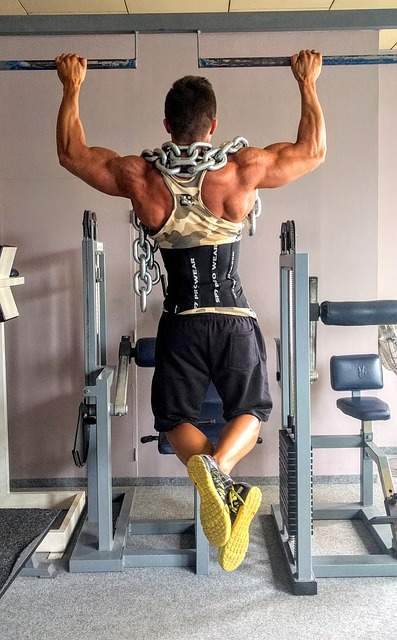
To progress in your pull-up bar workouts and continually challenge your muscles. Following a structured training program can be beneficial. Here are a few training programs that can help you improve your pull-up performance.
Beginner Program: If you’re new to pull-ups, start with assisted variations and gradually decrease the assistance over time. Focus on building strength and mastering proper form.
Progressive Overload: Gradually increase the number of reps or sets you perform in each workout. Aim to add one extra rep or set every week to progressively challenge your muscles.
Weighted Pull-Ups: Once you can comfortably perform several bodyweight pull-ups, you can add extra resistance. By using a weight belt, a weighted vest, or holding a dumbbell between your feet.
Interval Training: Incorporate interval training into your pull-up workouts by alternating. Between periods of high-intensity pull-ups and periods of rest or less intense exercises. This helps improve both strength and cardiovascular fitness.
Remember to listen to your body and gradually increase the intensity of your workouts. Pushing too hard too soon can lead to injury and hinder your progress.
Common Mistakes to Avoid
To ensure a safe and effective pull-up bar workout. It’s important to be aware of common mistakes and avoid them.
Incomplete Range of Motion: Avoid cheating by not completing the full range of motion. Make sure your arms are fully extended at the bottom and that your chin is raised above the bar at the top.
Excessive Swinging: Swinging or using momentum to complete the pull-up reduces the effectiveness of the exercise. And puts unnecessary strain on your joints. Focus on controlled movements.
Overtripping: Avoid gripping the bar too tightly, as it can lead to unnecessary tension in your forearms and limit your endurance. Maintain a firm grip without excessive tension.
Lack of Rest: Give yourself adequate rest between sets to allow your muscles to recover. Pushing too hard without proper rest can lead to fatigue and increased risk of injury.
Ignoring Proper Form: Poor form not only reduces the effectiveness of your workouts but also increases the risk of injury. Prioritize proper form and technique over the number of reps or sets you can perform.
By being mindful of these common mistakes and focusing on proper technique. You can maximize the benefits of your pull-up bar workouts and minimize the risk of injury.
Pull Up Bar Frequently Asked Questions
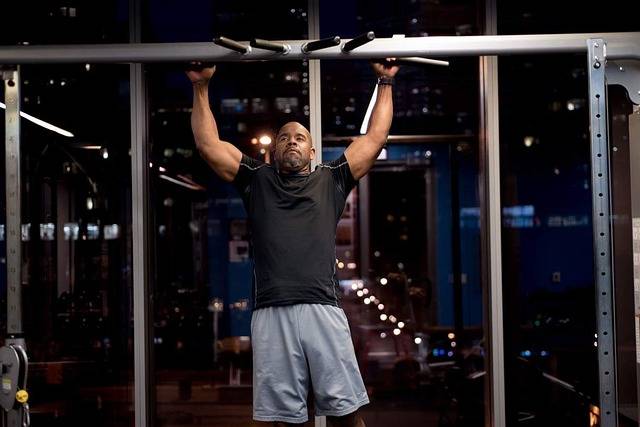
What muscles do pull-ups work?
Pull-ups primarily work the muscles in the back. Including the latissimus dorsa (last), rhomboids, and trapezius. They also engage the muscles in the arms, shoulders, and core.
Can pull-ups help me lose weight?
Pull-ups are a compound exercise that engages multiple muscle groups. Helping to increase overall calorie burn. When combined with a balanced diet and regular cardio exercises, pull-ups can contribute to weight loss.
How many pull-ups should I do as a beginner?
As a beginner, start with assisted pull-up variations and aim for 3-5 sets of 5-10 repetitions. Gradually increase the number of reps and sets as you build strength.
Can women do pull-ups?
Absolutely! Women can perform pull-ups just like men. While women may typically have less upper body strength. Consistent training and progression can help them achieve their pull-up goals.
Do I need a spotter for pull-ups?
Generally, you don’t need a spotter for pull-ups. However, if you’re attempting advanced variations or using additional weight. Having a spotter can provide an extra layer of safety.
Can I install a pull-up bar without drilling?
Yes, you can opt for a doorway pull-up bar that uses leverage or pressure to stay in place, eliminating the need for drilling. However, ensure the bar is securely positioned and can support your weight.
Conclusion
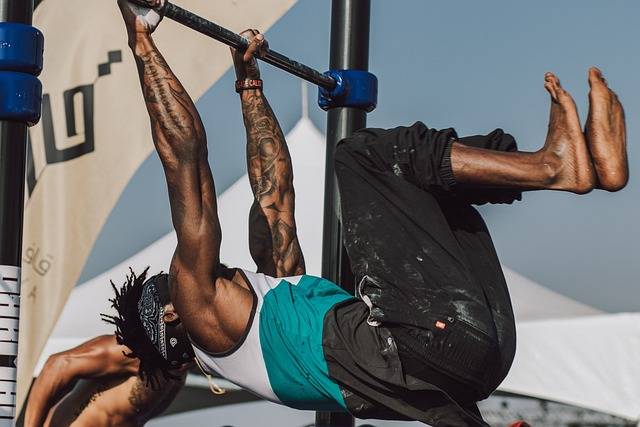
A pull-up bar is an excellent tool for building upper body strength, improving grip strength, and achieving a well-rounded fitness level. By incorporating pull-up bar workouts into your exercise routine. You can target multiple muscle groups and experience significant strength gains.
Remember to choose the right type of pull-up bar, install it properly, and maintain proper form during exercises. You can reach your fitness objectives if you are consistent and dedicated.
<< Previous Post
https://newsstories.in/the-ultimate-guide-to-losing-weight-quickly/
>> Next Post
https://newsstories.in/ministry-of-health-ensuring-a-healthy-future/



